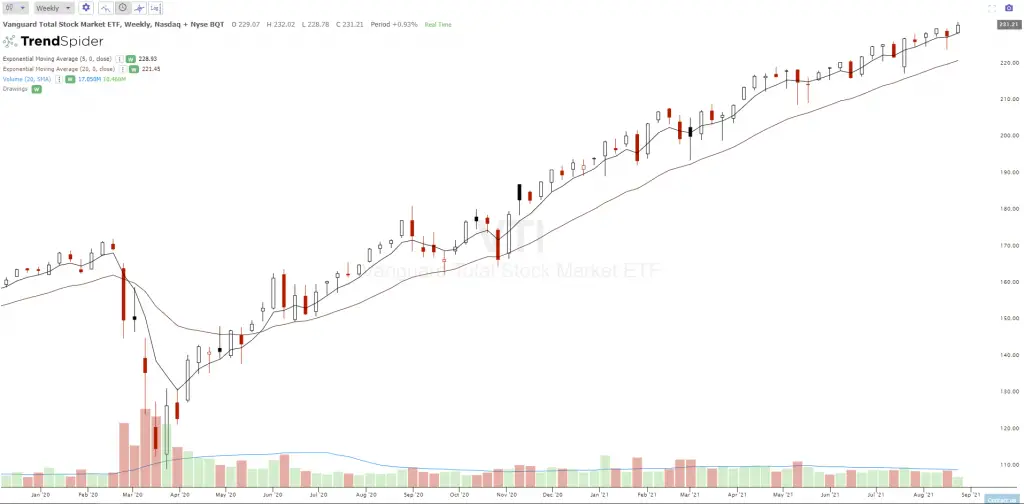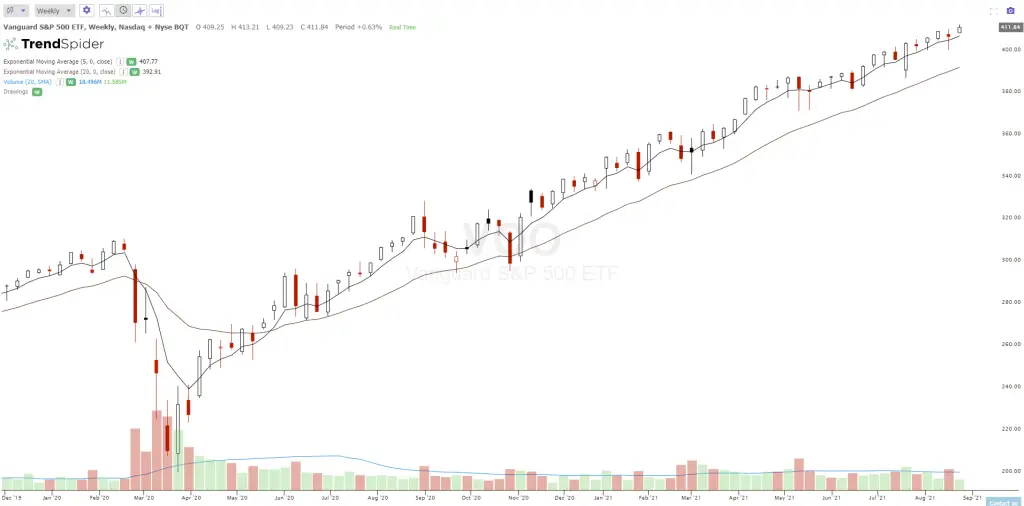Two popular and highly liquid Vanguard ETFs are ticker symbol VOO (S&P 500) and VTI (Total stock market). These are both stock market index exchange traded funds but perform differently.
VOO invests in stocks that make up the S&P 500 Index. It holds around 500 of the largest U.S. companies. Its goal is to track the index’s return, this is considered a metric of the overall U.S. big cap stock returns. VOO has a high probability for long term growth of investment capital. This is an equity ETF so the share prices rise and drop faster and more sharply than bond funds. It is a good choice for long-term investment goals of consistent growth and safety.[1]
VTI tracks the performance of the CRSP US Total Market Index which is composed of large-cap, mid-cap, and small-cap stocks that are diversified for growth and also value. VTI uses a passively managed index-sampling portfolio strategy. This ETF remains fully positioned in the tracked index. It is a very low expense ETF that does not interfere much with compounded growth of the index performance.[2]
- VOO comprises approximately 82% of VTI by weight, but VTI holds the other approximate 18% of capital in mid-cap and small-cap exposure.
- VTI can be more volatile than VOO with the higher beta stocks included.
- VTI tends to outperform VOO over the long term with the smaller stocks in the ETF that tend to grow more over time than the big caps in VOO.
- VOO has approximately 500 holdings and VTI has close to 3,500 holdings, so VTI is more diversified by company, market cap, and sector.
- Both VOO and VTI have a very low expense ratio of 0.03%. [3]
Think of VOO as being the same as the SPY ETF and the large cap exposure in your stock portfolio representing the biggest most successful companies in the U.S. that is one of the primary buy an hold strategies that Warren Buffett recommends for passive long term investors.
VTI is a way to invest in the total stock market giving both the safety of the big caps but also including stocks that can still multiply in price and enter the larger indexes over time. VTI gives a more complete investment into the U.S. stock market with more potential reward that also comes with more risk adding companies that could be big winners or big losers.
Both choices are great options for investors but a portfolio doesn’t need to hold both as they overlap, VTI will give you S&P 500 index exposure so no need for VOO in the same portfolio as VTI unless looking for multiple exposure to the S&P 500.

